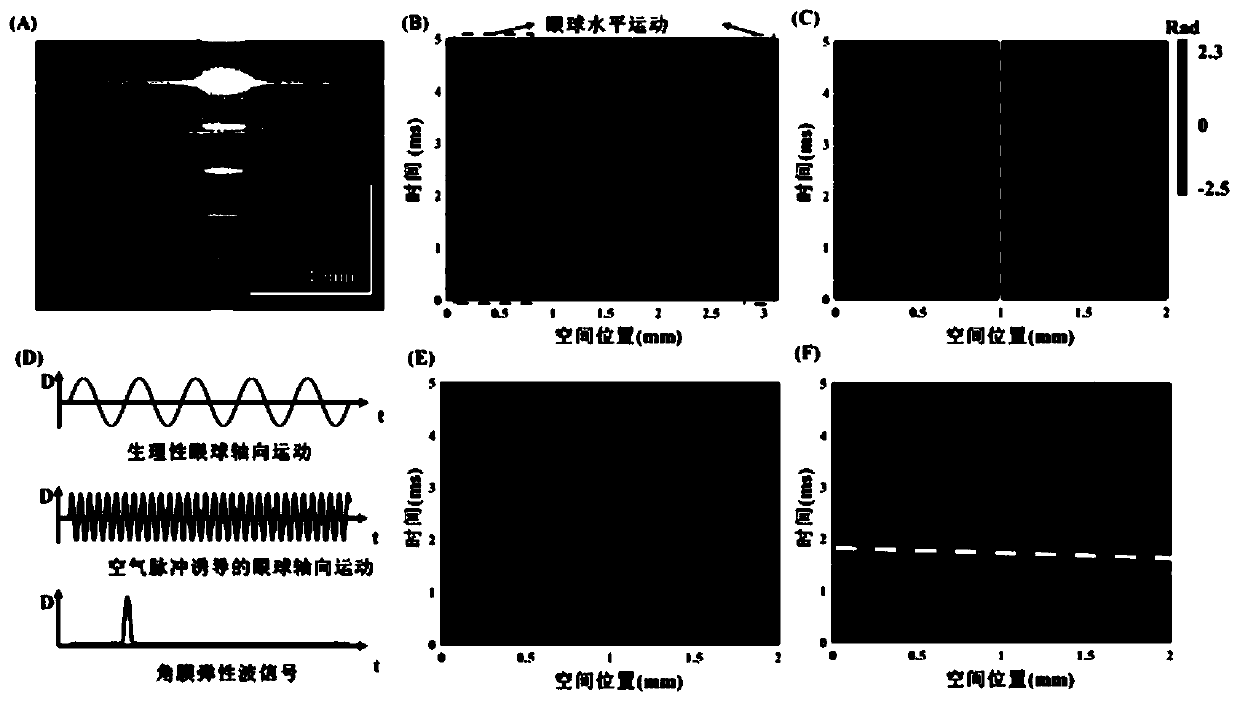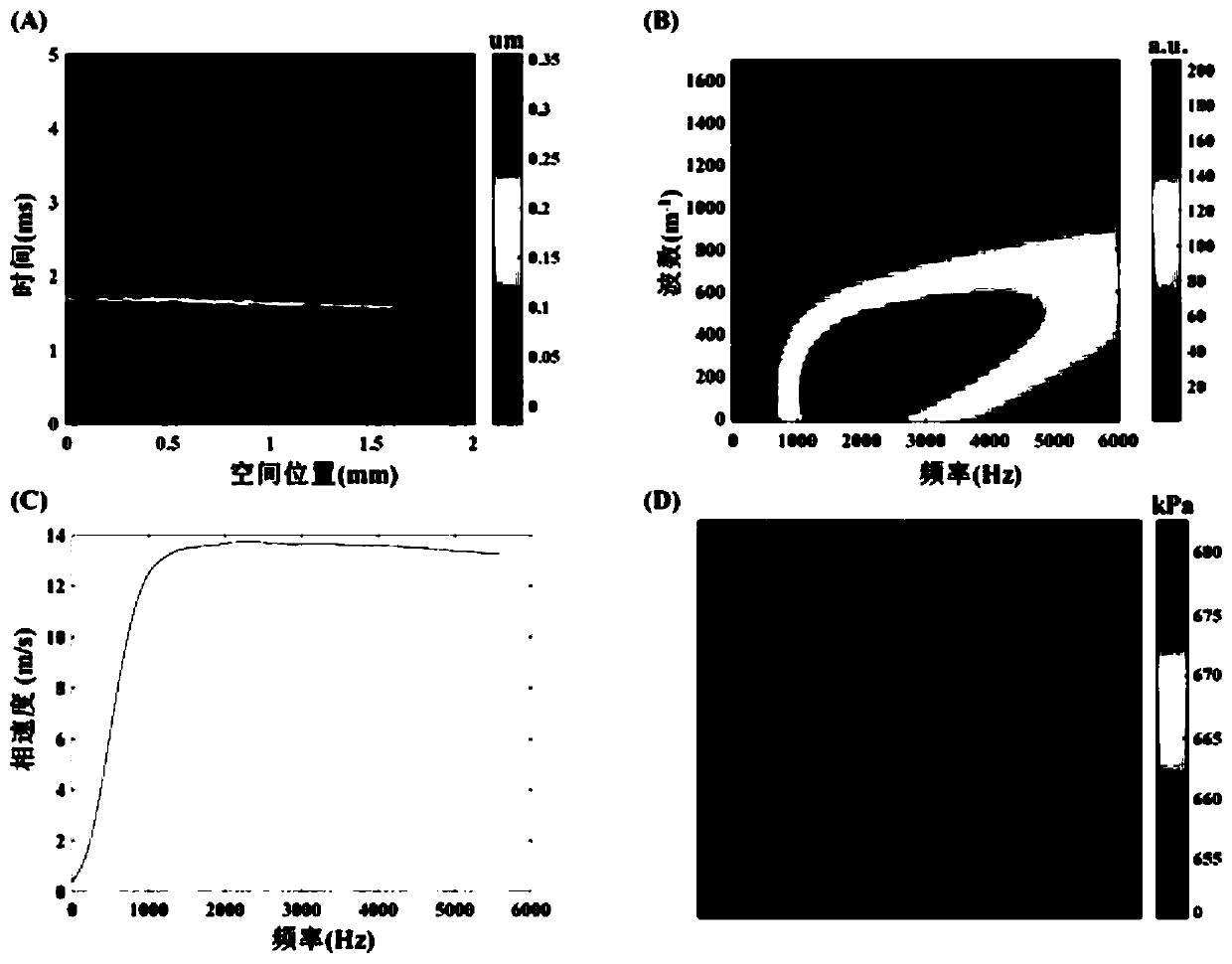Method for measuring elasticity modulus of in-vivo human cornea based on jet-propelled optical coherence elasticity imaging technology
An optical coherence and elastography technology, used in eye testing equipment, medical science, diagnosis, etc., can solve the lack of human eye movement artifact correction algorithms, the in vivo elastic modulus of human corneal tissue has not been obtained, and the algorithm cannot Promotion and application issues
- Summary
- Abstract
- Description
- Claims
- Application Information
AI Technical Summary
Problems solved by technology
Method used
Image
Examples
Embodiment Construction
[0035] The present invention will be further described below in conjunction with specific embodiments. The embodiments of the present invention are intended to enable those skilled in the art to better understand the present invention, but do not limit the present invention in any way.
[0036] The present invention is based on jet optical coherent elastography technology to realize the elastic imaging of human corneal tissue in vivo, mainly including Phs-OCT system construction, integration of jet device and Phs-OCT system, human eye movement artifact correction and Lamb The wave model was used to solve the elastic modulus of corneal tissue.
[0037] (1) Phs-OCT system construction: Phs-OCT is based on the interference spectrum signal collected by structural OCT, which is converted into phase information after data processing, so as to reflect the degree of deformation with high precision.
[0038] The balanced detector obtains the interference spectral intensity I(λ), after ...
PUM
 Login to View More
Login to View More Abstract
Description
Claims
Application Information
 Login to View More
Login to View More - R&D
- Intellectual Property
- Life Sciences
- Materials
- Tech Scout
- Unparalleled Data Quality
- Higher Quality Content
- 60% Fewer Hallucinations
Browse by: Latest US Patents, China's latest patents, Technical Efficacy Thesaurus, Application Domain, Technology Topic, Popular Technical Reports.
© 2025 PatSnap. All rights reserved.Legal|Privacy policy|Modern Slavery Act Transparency Statement|Sitemap|About US| Contact US: help@patsnap.com



